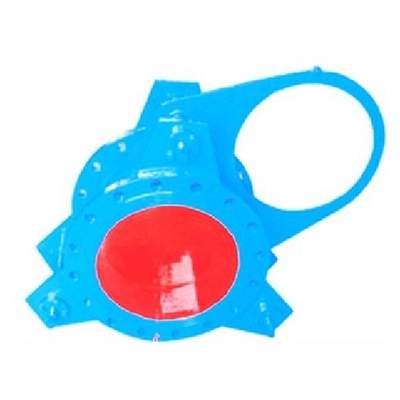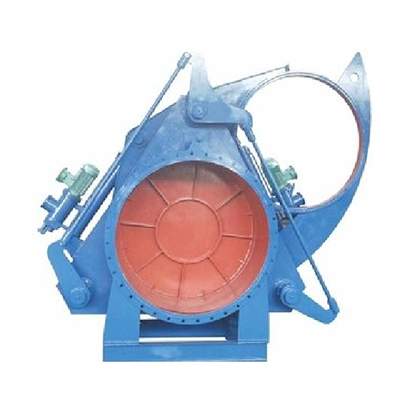Welcome to My Blog!
Before we dive into the content, if you’re interested in our products or have any questions, please feel free to visit our Contact Us page on the website. Our team is ready to assist you with inquiries, orders, or any support you may need.
Now, let’s get started on our journey together. I hope you find the content here insightful, engaging, and valuable.
What is a Blind Valve?

A blind valve is a vital component in industrial pipelines, designed to completely stop or block the flow of fluids in a specific section of the system. Unlike control valves or gate valves that regulate or redirect flow, blind valves provide full isolation, making them essential for safety, maintenance, and operational efficiency.
Blind valves are commonly made from high-strength materials such as stainless steel, carbon steel, alloy steel, or even exotic metals for highly corrosive environments. These materials allow the valves to withstand high pressures, extreme temperatures, and chemically aggressive fluids, which is why they are widely used in industries like oil & gas, chemical processing, water treatment, power generation, and pharmaceuticals.
Understanding the basic function, materials, and industrial applications of blind valves is crucial for engineers and operators aiming to optimize pipeline safety and efficiency.
Types of Blind Valves and Their Applications
Blind valves come in several types, each designed to meet specific operational needs:
- Full Bore vs Reduced Bore Blind Valves: Full bore blind valves match the pipeline diameter, providing total isolation without pressure drop. Reduced bore blind valves have a smaller opening, which can be useful for certain pressure control or flow-testing applications.
- Spectacle Blind Valves vs Solid Blind Plates: Spectacle blinds consist of a solid disc on one side and an open ring on the other, allowing repeated use for temporary isolation. Solid blind plates are typically used for permanent pipeline closure.
- High-Pressure vs Low-Pressure Applications: Valves designed for high-pressure pipelines are reinforced to handle extreme operating conditions, while low-pressure valves focus on cost-efficiency and standard flow control requirements.
- Custom Blind Valves: For specialized pipelines, custom blind valves can be manufactured to handle unique sizes, pressures, or corrosive environments.
Choosing the correct type of blind valve ensures maximum operational safety, cost-efficiency, and system reliability.
How Blind Valves Enhance Safety in Pipelines
Safety is the primary reason for using blind valves. They prevent accidental fluid flow, leaks, and system contamination during maintenance, repairs, or emergency shutdowns. By completely isolating a pipeline section, blind valves protect maintenance personnel and prevent costly accidents.
Blind valves also help ensure compliance with industry safety standards, including ANSI, ASME, API, and ISO regulations. Properly selected blind valves reduce operational hazards, prevent environmental spills, and minimize the risk of equipment damage caused by unexpected pressure surges or leaks.
Improving Efficiency with Blind Valves
Blind valves not only enhance safety but also contribute to operational efficiency. By enabling quick and reliable isolation, they reduce downtime during maintenance, inspection, or pipeline modifications. This ensures that other parts of the system remain operational without interruption.
Additional efficiency benefits include:
- Reducing the risk of operational errors caused by incorrect valve selection.
- Minimizing product loss due to leaks or accidental flow.
- Supporting predictive maintenance strategies by allowing safe isolation and inspection.
- Optimizing pipeline flow control, especially in systems that require frequent maintenance or temporary shutdowns.
In industries where downtime costs can run into thousands of dollars per hour, properly installed blind valves can significantly improve ROI and productivity.
Installation and Maintenance Best Practices
Proper installation and maintenance are crucial to maximize the safety and efficiency benefits of blind valves:
- Installation Guide: Ensure correct alignment with pipeline flanges, use high-quality gaskets, and follow manufacturer torque specifications. Improper installation can lead to leaks or valve failure.
- Maintenance Tips: Conduct regular inspections for corrosion, cracks, or wear. Clean surfaces, check bolts, and lubricate moving parts as recommended. Replace worn or damaged components immediately.
- Common Mistakes: Avoid using blind valves outside their pressure or temperature ratings. Never operate a valve showing visible damage or deformation. Ensure that valves are not subjected to unnecessary mechanical stress during pipeline operations.
Well-maintained blind valves can last for decades while maintaining safety, performance, and compliance with industry standards.
Comparing Blind Valves with Other Valves
Blind valves are often compared to other industrial valves to help engineers make the right selection:
- Blind Valve vs Gate Valve: Gate valves regulate flow, while blind valves provide total isolation. Using the wrong valve can compromise safety.
- Blind Valve vs Plug Valve: Plug valves allow partial flow control, while blind valves stop the flow completely.
- Blind Valve vs Spectacle Blind: Spectacle blinds are reusable for temporary isolation; solid blind plates are better for permanent closure.
Selecting the appropriate valve type ensures operational reliability, lower maintenance costs, and safer pipeline operation.
Selecting the Right Blind Valve for Your System
When choosing a blind valve, consider these critical factors:
- Pressure and Temperature Ratings: Match the valve’s rating to the pipeline’s maximum operating conditions.
- Material Compatibility: Choose a material resistant to corrosion, chemical attack, and high wear.
- Sizing and Standards Compliance: Ensure the valve fits the pipeline diameter and meets ANSI, ASME, or API standards.
- Manufacturer Reputation: Choose reputable manufacturers with certified quality control and proven reliability.
Proper selection reduces the risk of unexpected failures, improves maintenance efficiency, and supports long-term pipeline safety.
Where to Buy Quality Blind Valves

High-quality blind valves are available from trusted industrial suppliers and manufacturers. Consider the following when purchasing:
- Supplier reputation, reviews, and industry certifications
- Price range relative to quality and material
- Availability of custom or specialized valves
- Compliance with ANSI, ASME, API, or ISO standards
- After-sales support, warranties, and technical guidance
Reliable sourcing ensures your blind valves meet both safety and performance standards, which is critical for high-risk industries like oil & gas or chemical processing.
FAQ
What is a blind valve?
A blind valve is a type of valve used to completely stop or isolate flow in a pipeline, ensuring safety during maintenance or emergency shutdowns.
How does a blind valve work?
It works by blocking the pipeline with a solid disc or plate, preventing fluid from passing through and allowing safe isolation of a pipeline section.
What are the common types of blind valves?
The main types include solid blind plates, spectacle blinds, full bore blind valves, and reduced bore blind valves, each suitable for different industrial applications.
Where are blind valves commonly used?
Blind valves are widely used in oil & gas, chemical processing, water treatment, power generation, and pharmaceutical pipelines where safety and maintenance efficiency are critical.
How do I choose the right blind valve for my system?
Consider pressure and temperature ratings, material compatibility, pipeline size, compliance with industry standards, and the reliability of the manufacturer.
Need Help Choosing the Right Blind Valve?
If you’re unsure about which blind valve is best for your pipeline or system, our experts are here to help. Contact us today for a personalized consultation, and ensure your pipeline is safe, efficient, and compliant with industry standards. Don’t wait until an emergency occurs—get in touch now to protect your system and your operations!
